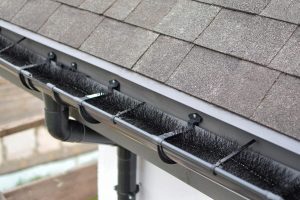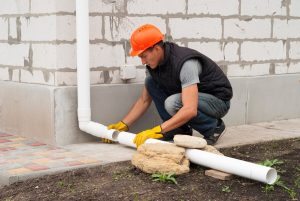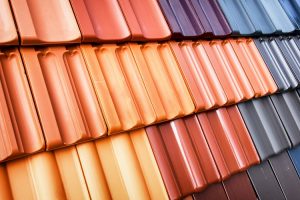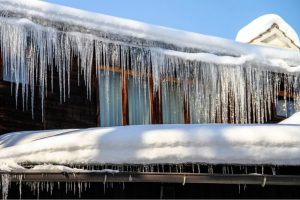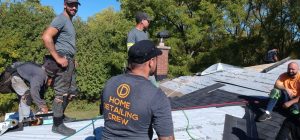The Best Materials for Flat Roofs
Apr 6, 2023
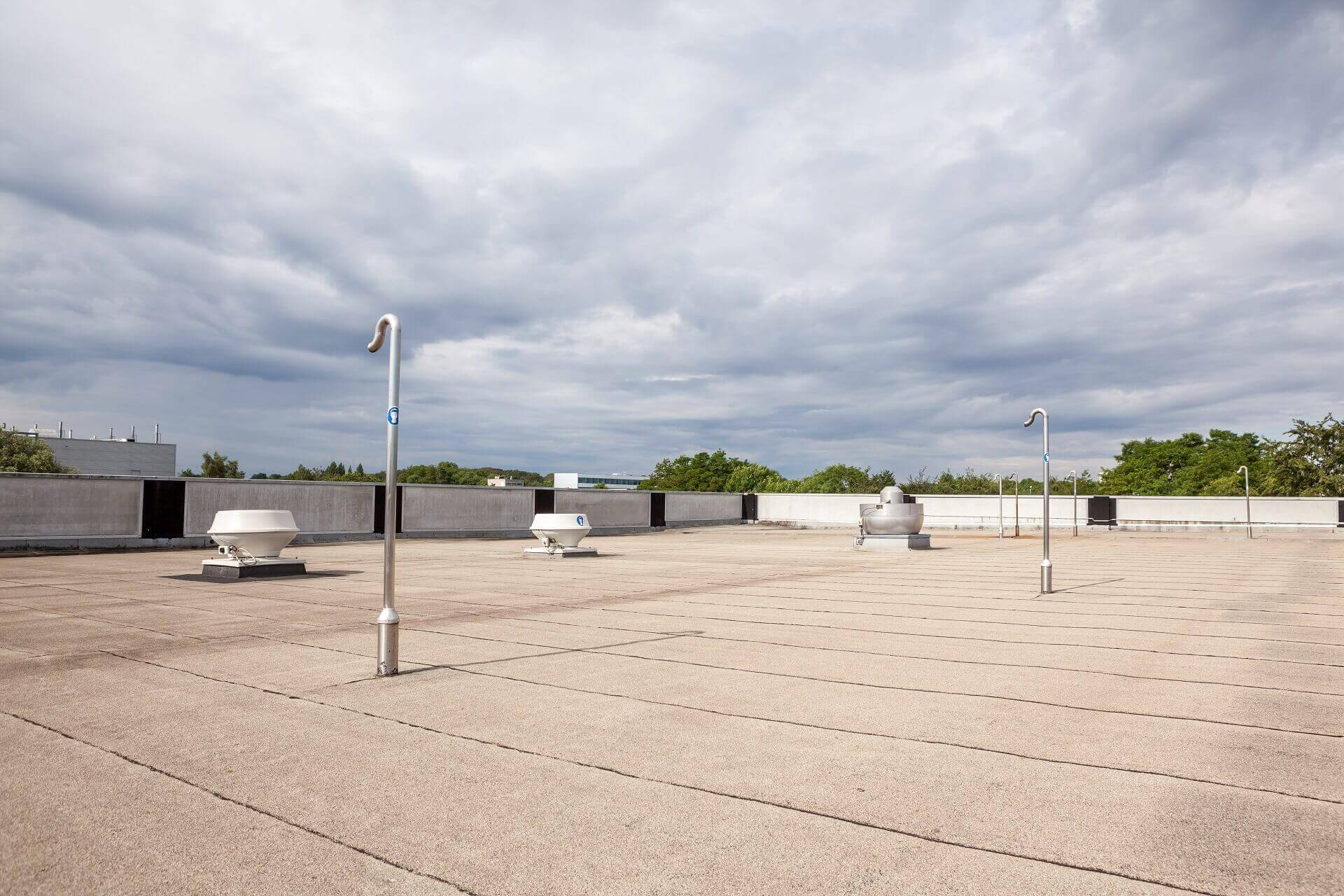
When dealing with flat roofs, you must consider all the available options to ensure you get the best material for your needs. Some roofing materials have been around for longer and are more suitable for the low slopes of these roofs. The nature of these roofs also means they do not drain water as quickly as the high-pitched roofs, making some materials better than others. Other factors to consider are the climatic conditions, available funds, installation process, and the duration of the installation.

When replacing your flat roof, it is important to consider all the options available. The flat roofing marketplace is filled with tons of different options, which can make it difficult to choose the material that is right for you. Using the information below, D’Angelo and Sons can help you make an informed decision on the type of flat roof that is right for your replacement.
What is the Purpose of Flat Roofs?
Before jumping into comparing flat roofs materials, it is important to understand the purpose flat roofs serve. Flat roofs are typically utilized in commercial settings for the purpose of (1) aesthetics, and (2) convenience. As commercial buildings are typically high-traffic areas, flat roofs offer a more convenient location to install outdoor HVAC units. Of course, the main function of a roof is to create a barrier of protection between the building below and the above weather elements. However, flat roofs are not completely flat. They do have a very low slope that aid in draining water but, such a low slope holds water and snow differently than a regular pitched roof would. To stay watertight, the appropriate flat roof materials, such as the ones below, must be used.
Polyvinyl Chloride (PVC) Roofing
PVC roofing is one of the most popular options for a flat roof. PVC, short for polyvinyl chloride, is a single-ply thermoplastic roofing membrane known for its longevity, durability, and overall energy efficiency. Although the cost of PVC roofing is higher than other single-ply commercial materials, they do offer a wide variety of benefits. The reinforced membrane helps to make PVC roofs resistant to damage on impact and prevent leaks. Due to their white colour, PVC roofing is reflective and can significantly aid in the company’s electrical bill.
Fors
- Has longevity of up to 20 years
- Can last long, especially when the seams are welded, but using heat brings many challenges
- Has high resistance to pollutants
- Is wind-resistant
Againsts
- The material is difficult to dispose of without endangering the environment. Its production is also detrimental to the surrounding.
- The material can be difficult to install
- It can become less flexible as time goes by, especially when the additives break down
Built Up Roof (BUR)
Initially, built-up roofing was the most popular because others like membrane roofing and modified bitumen were not yet developed. The roofing consists of multiple layers of gravel and tar, which makes it the most water-resistant roofing type.
The bottom layer can be made with two insulation boards, the middle layer usually has alternating layers of asphalt and tar, and the top layer is mostly made of gravel. When all these layers are installed properly, you end up with a roof that is compact, thick, durable, and seamless.
Although it is resistant to weather and general wear and tear, BUR roofs are not used in most homes because they are very heavy.
Fors
- Resistant to moisture penetration
- Has adequate insulation
- Needs little maintenance
- Lasts a minimum of 10 years
- Is sturdy and resistant to foot traffic
Againsts
- Installation is a slow process because of the many layers and variety of materials needed.
- The installation is usually messy, with potentially dangerous fumes released. The smell emitted during the process can also be unpleasant.
- The weight of the materials often requires reinforcement of the joists to prevent the roof from caving in.
Repairs can be tricky, especially where leaks are concerned. Fixing the problem may involve removing and returning all the layers.
GRP Roofing
Glass Reinforced Plastic or GRP Fibreglass is laminate roofing made with chopped strand mat glass fibres and polyester resin.
Fors
- Has great moisture resistance, making it perfect for use in humid areas
- Strong and durable
- Does not have joints or seams
- Resistant to weather
- Long-lasting
- Lightweight
Againsts
- Can be too noisy when it rains
- Installation and maintenance are more expensive than other flat roof options
- Installation must take place when it is dry or the weather is mild
- It is not ideal for larger roofs, such as commercial buildings
- It is inflexible, which means blistering can occur if moisture gets trapped between the membranes
- Installation during cold weather will hinder proper curing
Modified Bitumen Roofing
Modified bitumen roofs have a price point that stand out from the rest. Their low cost is a budget-friendly option for flat roofs. Modified bitumen is a multi-ply flat roofing system and is a modern take on its close relative, the built-up roofing (BUR) system. Modified bitumen roofs use an asphalt membrane as the base of the roof. Because they are asphalt-based, modified bitumen roofs are prone to cracking and blistering which can shorten their lifespan to 10-15 years. Luckily, they are quick and easy to install and reflect heat well.
Fors
- Is easier and cheaper to maintain throughout its lifespan
- Installation is easy and can be done by homeowners
- Reflective surface reduces heat absorption and helps reduce energy consumption
- It is recyclable
Againsts
- Does not support heavy foot traffic
- Installation may involve the use of open flames, which requires utmost care or professional skills
- It is susceptible to tearing
- The material is potentially hazardous and is less visually attractive
EPDM Rubber Roof
EPDM is a rubber roofing made with recycled materials, which makes it one of the most environment-friendly options. The material is used in the form of strips with an adhesive that binds them together. Because of how the materials are made, Ethylene Propylene Diene Monomer is one of the safest, even if there is a lot of heat.
Fors
- Can last over 50 years
- Provides the best insulation and resistance to UV rays and infrared
- The material is moisture repellent
- EPDM is resistant to weather because it expands and contracts easily. The flexibility helps it adjust to the weather changes.
- Does not crack, rot, or blister
- Repairs can be handled easily
- It is one of the best eco-friendly roofing choices in Canada
Againsts
- Installation only works well if done during the dry season
- It is susceptible to leaks, especially when installation is done poorly
- Cannot be handled as DIY, especially where other features like skylights, vents, and chimneys are needed
Thermoplastic Polyolefin (TPO) Roofing
TPO, short for thermoplastic polyolefin, is a single-ply thermoplastic roofing membrane that offers great energy efficiency for the cost. In a similar fashion to PVC roofs, TPO roofs are also white in colour meaning they have the same energy saving properties and do not degrade easily under harsh ultraviolet radiation. TPO roofs are bonded by melting plastics in the membrane together. Through this method, a permanent bond is formed between the seams and it is less likely that leaks will occur. While they are an inexpensive option for flat roofs, they are also dependable with a lifespan between 10-20 years.
Metal Roofing
A standing seam metal is a great option for roofs that have a slope greater than 2 inches. Metal roofs are the most expensive option when it comes to commercial buildings however, they do boast the longest lifespan, lasting between 20-30yrs. Metal is known for its durability and is immune to cracks and reflects heat from the sun. Although there are plenty of pros that come with metal roofs, there are also some downsides. Generally, metal roofs need to be torn out completely before a full replacement. Moreover, they are prone to rusting and susceptible to leaks around the seams and roof edges.
Learn More About Flat Roofs
Replacing or restoring your flat roof is a major decision that can have a huge impact on your business. When you need flat roofing services, it is important to choose experts who understand your unique issues and possess the skills needed to offer quality work. Taking a personalized approach when repairing and constructing commercial flat roofs enables us to deliver superior quality at all times. At D’Angelo and Sons, we offer free consultations for clients looking to make a decision about their flat roof. Contact us today for your customized commercial roofing solution!
